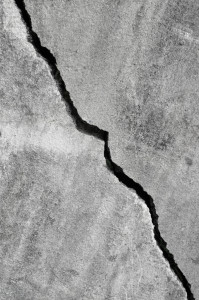Epoxy Injection

 Cracks are common sign that structural failure may be occurring and can lead to multiple problems such as leaks, façade deterioration, foundation instability, etc. How can we address them?
Cracks are common sign that structural failure may be occurring and can lead to multiple problems such as leaks, façade deterioration, foundation instability, etc. How can we address them?
Epoxy injection is one of the most common approaches to address cracks in structures. Structural restoration using epoxy injection had been used for decades as a system for fusing a damaged element back together thus restoring the original strength, quality and load capacity of a concrete, masonry, or wood structure.
The proper selection of the epoxy injection material depends on the width of the crack and the causes of the crack. Epoxies have different viscosities which are intended to be placed in a variety of applications. Usually, thinner (less viscous) epoxies are placed in thinner cracks, while thicker (more viscous) materials are used in wider cracks.
Epoxy injection can create an impervious seal to air, water, many chemicals, debris, and other contamination that is stronger than the parent material. The injection can also help to thwart water leakage through concrete structures and prevent corrosion of reinforcing steel by protecting it against moisture.
However, a misconception we often encounter is that epoxy can be used to seal leaking foundation wall cracks. While leaking wall cracks can be injected to stop water infiltration, epoxy is the almost always the wrong material for this application. A future posting will discuss the injection of leaking cracks.
Also keep in mind that epoxy injection will not be effective, long term, if the crack is active. Before injection, the cause of the crack, i.e. over loading, corrosion, etc., must be identified and properly addressed. If the cause of the crack is not remedied, the injected element will likely crack once again, near the repair
